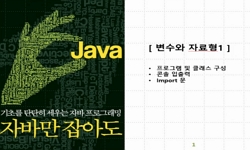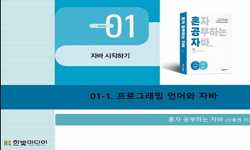구글과 오라클의 저작권 침해 사건은 구글의 이용이 공정이용에 해 당한다고 결정함으로써 구글의 승리로 끝이 났다. 본 판결에 대하여 비록 강력한 반대의견이 존재하긴 하지만, 다음과 같...
http://chineseinput.net/에서 pinyin(병음)방식으로 중국어를 변환할 수 있습니다.
변환된 중국어를 복사하여 사용하시면 됩니다.
- 中文 을 입력하시려면 zhongwen을 입력하시고 space를누르시면됩니다.
- 北京 을 입력하시려면 beijing을 입력하시고 space를 누르시면 됩니다.
https://www.riss.kr/link?id=A107806940
-
저자
김창화 (한밭대학교)
- 발행기관
- 학술지명
- 권호사항
-
발행연도
2021
-
작성언어
Korean
-
주제어
구글대 오라클 ; 선언코드 ; 자바 ; 공정이용 ; 저작물성 ; 공익성 ; Google v. Oracle ; Declaring Code ; Java ; Fair Use ; Copyrightability ; Public Interest
-
등재정보
KCI등재
-
자료형태
학술저널
- 발행기관 URL
-
수록면
47-81(35쪽)
-
KCI 피인용횟수
0
- DOI식별코드
- 제공처
-
0
상세조회 -
0
다운로드
부가정보
국문 초록 (Abstract)
구글과 오라클의 저작권 침해 사건은 구글의 이용이 공정이용에 해 당한다고 결정함으로써 구글의 승리로 끝이 났다. 본 판결에 대하여 비록 강력한 반대의견이 존재하긴 하지만, 다음과 같은 이유로 공정이 용이 성립한다는 다수의견이 타당해 보인다. 먼저, 선언코드는 작동방 법이어서 제102조(b)에 의해 저작물성이 없고, 설령 있더라도 그 보호 범위가 매우 좁아 공정이용이 쉽게 적용될 수 있다. 또한, 선언코드의 창작성은 기술적 창작성에 해당하여 저작권법에서의 보호를 인정할 수도 없고, 이는 다른 표현이 많이 있는 경우에도 같다. 그리고 공정이용 은 저작권법의 목적에 따른 공익성 즉, 프로그래머들의 보호나 새로운 혁신적 도구의 제공 등을 고려하여 판단이 이루어져야 하는데, 다수의 견의 판단이 바로 이러한 공익성을 고려하여 이루어졌다. 공정이용 판 단의 이러한 방법들 즉, 저작물에 제102조(b)를 적용하여 저작물성을 판단하고, 기술적 창작성을 저작권 보호에서 제외하고, 공익성을 개별 적 요소에서 고려하는 것은 공정이용 판단에서 가장 큰 문제가 되는 예측불가능성과 불확실성을 감소시키는데도 큰 역할을 할 수 있을 것 이다. 그리고 이러한 공정이용 판단 기준과 방법들은 같은 법 조항을 가진 우리나라에도 많은 지침이 될 수 있을 것이며, 특히, 저작물성에 대한 보호의 제한과 공공적 요소의 고려는 우리 사례에 많은 참고가 될 수 있을 것으로 보인다.
다국어 초록 (Multilingual Abstract)
The copyright infringement case between Google and Oracle ended with Google's victory by deciding that its use constitutes fair use. Although there are strong objections to this ruling, the majority view is valid for the following reasons: First of al...
The copyright infringement case between Google and Oracle ended with Google's victory by deciding that its use constitutes fair use. Although there are strong objections to this ruling, the majority view is valid for the following reasons: First of all, the declaration code is a method of operation, so it is not copyrightable by Article 102(b), and even if it can be protected, copyright protection is not achieved because protection range is very narrow, so fair use should be applied easily. Furthermore, the creativity of declaration code corresponds to technical creativity, and protection under copyright law cannot be recognized, even if there are many other expressions. In addition, fair use should be made in consideration of the public interest for the purposes of copyright law, i.e. the protection of programmers or the provision of new innovative tools. Applying these methods of fair use judgement to work, that is, article 102(b), excluding technical creativity from copyright protection, considering public interest as an individual factor would also play a major role in reducing unpredictability and uncertainty that is the biggest problem in fair use judgement. And these fair use criteria and methods could be a number of guidance for our country with the same provisions of the law, especially the restriction on protection of copyright and the consideration of public interests factors.
목차 (Table of Contents)
- Ⅰ. 서언
- Ⅱ. 관련 기술의 검토
- Ⅲ. Google v. Oracle 판결의 검토
- 1. 공정이용의 인정 - 다수의견
- 2. 공정이용의 부정 - 반대의견
- Ⅰ. 서언
- Ⅱ. 관련 기술의 검토
- Ⅲ. Google v. Oracle 판결의 검토
- 1. 공정이용의 인정 - 다수의견
- 2. 공정이용의 부정 - 반대의견
- 3. 비교에 따른 쟁점의 제기
- Ⅳ. 쟁점의 검토
- 1. 선언코드의 보호 여부
- 2. 공익성의 참작 여부
- Ⅴ. 결어
- 참고문헌
- <국문초록>
참고문헌 (Reference)
1 오승종, "저작권법" 박영사 2013
2 Pamela Samuelson, "Unbundling Fair Uses" 77 : 2537-, 2009
3 Pierre N. Leval, "Toward a Fair Use Standard" 103 : 1105-, 1990
4 Shyamkrishna Balganesh, "The Uneasy Case Against Copyright Trolls" 86 : 723-, 2013
5 Sepehr Shahshahani, "The Nirvana Fallacy in Fair Use Reform" 16 : 273-, 2015
6 Peter S. Menell, "Rise of the API Copyright Dead?: An Updated Epitaph for Copyright Protection of Network and Functional Features of Computer Software" 31 : 305-, 2018
7 Michael J. Madison, "Rewriting Fair Use and the Future of Copyright Reform" 23 : 391-, 2005
8 Ned Snow, "Fair Use as a Matter of Law" 89 : 1-, 2011
9 Haochen Sun, "Fair Use as a Collective User Right" 90 : 125-, 2011
10 Craig Joyce, "Copyright in 1791: An Essay Concerning the Founders’s View of the Copyrght Power Granted to Congress in Article I, Section 8, CClause 8 of The U.S. Constitution" 52 : 909-, 2003
1 오승종, "저작권법" 박영사 2013
2 Pamela Samuelson, "Unbundling Fair Uses" 77 : 2537-, 2009
3 Pierre N. Leval, "Toward a Fair Use Standard" 103 : 1105-, 1990
4 Shyamkrishna Balganesh, "The Uneasy Case Against Copyright Trolls" 86 : 723-, 2013
5 Sepehr Shahshahani, "The Nirvana Fallacy in Fair Use Reform" 16 : 273-, 2015
6 Peter S. Menell, "Rise of the API Copyright Dead?: An Updated Epitaph for Copyright Protection of Network and Functional Features of Computer Software" 31 : 305-, 2018
7 Michael J. Madison, "Rewriting Fair Use and the Future of Copyright Reform" 23 : 391-, 2005
8 Ned Snow, "Fair Use as a Matter of Law" 89 : 1-, 2011
9 Haochen Sun, "Fair Use as a Collective User Right" 90 : 125-, 2011
10 Craig Joyce, "Copyright in 1791: An Essay Concerning the Founders’s View of the Copyrght Power Granted to Congress in Article I, Section 8, CClause 8 of The U.S. Constitution" 52 : 909-, 2003
11 Lawrence B. Solum, "Congress’s Power to Promote the Progress of Science: Eldred v. Ashcroft" 36 : 1-, 2002
12 Jason Mazzone, "Administering Fair Use" 51 : 395-, 2009
13 Lauren Gorab, "A Fair Use to Remember: Restoring Application of the Fair Use Doctrine to Strengthen Copyright Law and Disarm Abusive Copyright Litigation" 87 : 703-, 2018
동일학술지(권/호) 다른 논문
-
증강 및 가상현실에서의 디지털 화상에 대한 디자인법적 보호
- 한국지식재산학회
- 안원모
- 2021
- KCI등재
-
Google v. Oracle 판결에서의 저작물 공정이용(fair use) 법리 - 관련 산업에의 영향 -
- 한국지식재산학회
- 정진근
- 2021
- KCI등재
-
온라인수업을 위한 저작권법의 제한규정과 팬데믹 시대를 대비한 입법론
- 한국지식재산학회
- 최상필
- 2021
- KCI등재
-
- 한국지식재산학회
- 김원오
- 2021
- KCI등재
분석정보
인용정보 인용지수 설명보기
학술지 이력
| 연월일 | 이력구분 | 이력상세 | 등재구분 |
|---|---|---|---|
| 2027 | 평가예정 | 재인증평가 신청대상 (재인증) | |
| 2021-01-01 | 평가 | 등재학술지 유지 (재인증) |  |
| 2018-01-01 | 평가 | 등재학술지 유지 (등재유지) |  |
| 2015-01-01 | 평가 | 등재학술지 유지 (등재유지) |  |
| 2014-08-27 | 학회명변경 | 한글명 : 한국산업재산권법학회 -> 한국지식재산학회영문명 : Korea Industrial Property Law Association -> Korea Intellectual Property Society |  |
| 2011-01-01 | 평가 | 등재학술지 유지 (등재유지) |  |
| 2010-03-11 | 학회명변경 | 한글명 : 한국산업재산권법학회a -> 한국산업재산권법학회 |  |
| 2009-01-01 | 평가 | 등재학술지 유지 (등재유지) |  |
| 2007-01-01 | 평가 | 등재학술지 유지 (등재유지) |  |
| 2006-07-31 | 학술지등록 | 한글명 : 산업재산권외국어명 : Journal of Industrial Property |  |
| 2004-01-01 | 평가 | 등재학술지 선정 (등재후보2차) |  |
| 2003-01-01 | 평가 | 등재후보 1차 PASS (등재후보1차) |  |
| 2001-07-01 | 평가 | 등재후보학술지 선정 (신규평가) |  |
학술지 인용정보
| 기준연도 | WOS-KCI 통합IF(2년) | KCIF(2년) | KCIF(3년) |
|---|---|---|---|
| 2016 | 0.81 | 0.81 | 0.71 |
| KCIF(4년) | KCIF(5년) | 중심성지수(3년) | 즉시성지수 |
| 0.7 | 0.69 | 0.759 | 0.12 |




 eArticle
eArticle






